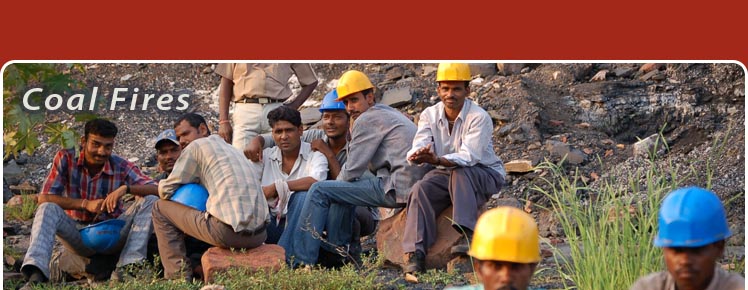

 How would you compare the JCFs to the coalfields in China?
How would you compare the JCFs to the coalfields in China?There are two main differences between the JCF and coalfields in China. The JCF lies in a relatively flat terrain with maximum elevations of 240 m and general dips of rock strata being 7-8°. On the other hand, most of the Chinese coalfields are in rugged mountainous terrains. The elevations in Ningxia (NW China), for example, range between 1500 m to 2500 m. Thus accessability in the coalfields in China is a much bigger problem than in India. The other difference is that the population density in the JCF is much higher compared to the rather scantily populated coalfields in Northern China. Thus in the JCF fire fighting requires relocation of a large population, which poses to be a bigger problem than the actual fire fighting operations.
 How old is the coal mining history in the JCF and who operates the coalmines there?
How old is the coal mining history in the JCF and who operates the coalmines there?
The mining acitivities in the JCF started in 1894 and intensified in 1925. However, at that time the mining activities were generally private undertaking, unplanned and profit-oriented. The government of India nationalised the coal mining industry in 1973/74. A major share of the coal mining is operated by the Bharat Coking Coal Ltd. (BCCL) which is a subsidiary of the Coal India Limited (CIL). A smaller share is also run the Tata Iron and Steel Company (TISCO).
 How much coal is being burnt by the coal fires in the JCF and how much CO2 is emitted from these coal fires?
How much coal is being burnt by the coal fires in the JCF and how much CO2 is emitted from these coal fires?
At present about 65 coalfires burn in the JCF. About 40 Mt of in-situ coal has been reported to be consumed by these fires in the 1990s. In the JCF reach of the coal fires is tackled on an individual basis. The fires differ widely in their nature and extent and an overview on the amount of CO2 emitted solely from uncontrolled coal fires is not available. However, in the Jharia Coalfield the effect of CO2 and particulate emission due to coal fires is marginalised by the high pollutant concentrations due to other factors such as mining, transport network, local habits in the densly populated area etc.
 One often reads that the JCF contains the "prime coking coal reserves" of the country. What exactly is coking coal?
One often reads that the JCF contains the "prime coking coal reserves" of the country. What exactly is coking coal?
As described in the 'coal atlas of India', some coals on heating suitable swell and fuse to form a hard and porous mass called coke which can provide concentrated heat and withstand some pressure. Such coals are called coking coals and are used extensively in metallurgical industry. Coals lacking this property are called non-coking and are used in power, railway, fertilizer and other industries. Both coking and non-coking coals contain various amounts of mineral matter or ash which adversely affects the heat-giving capability.